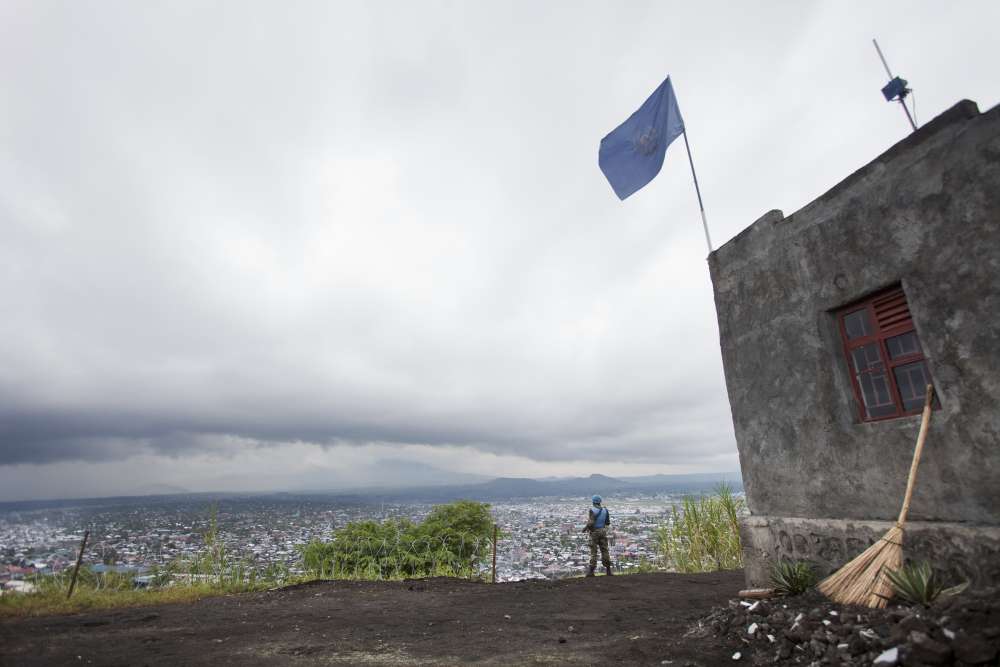In the Shadow of Syria
Assessing the Obama Administration’s Efforts on Mass Atrocity Prevention

Executive Summary
Mass atrocities planned and orchestrated by individuals continue to cause death, pain and destruction for millions of people in Syria, Iraq, South Sudan, the Central African Republic (CAR) and elsewhere. Large-scale, systematic and indiscriminate violence against ethnic or religious groups have led tens of millions of people mostly from the Middle East to seek refuge in Europe. The resulting political shock of the so-called “refugee crisis” will still shape this year’s elections in several EU member states. As an international community and as individual states, we have yet to learn how to prevent or stop atrocities with any regularity. Despite individual cases of relative success (some of which we analyze in this study) and larger political and legal advances, such as the International Criminal Court (ICC), the Human Rights Up Front initiative of the United Nations (UN), and the Responsibility to Protect (R2P), leaders and governments are failing all too often to live up to their commitment to assist individual states to meet their obligation to protect their own population from atrocities, and if a state manifestly fails to do so, to implement the international community’s subsidiary responsibility to protect threatened populations.
The US experience in atrocity prevention and its institutional reform initiatives aimed at improving its capacity to prevent atrocities provides an excellent opportunity to study efforts at the national level with a view to realizing states’ commitment to R2P and mass atrocity prevention. In 2011, President Obama declared that “preventing mass atrocities and genocide is a core national security interest and a core moral responsibility of the United States of America.” This review of the atrocity prevention toolkit across the US government found that the established tools and procedures were unable to meet this level of ambition despite the important and hard work of many, including in previous administrations.
The Obama administration chose two primary means to meet his goals on mass atrocity prevention: to elevate and institutionalize mass atrocity prevention as a priority in US foreign and national security policy, and to prevent and mitigate specific episodes of mass atrocities. Created in 2012 to “coordinate a whole-of-government approach to preventing mass atrocities and genocide,” the President’s Atrocities Prevention Board (APB) was the means to pursue the first goal, and made key contributions to the second.
This study identifies lessons for the Trump administration as well as other governments and non-state actors who share the goal of preventing and stopping mass atrocities. The study draws on data obtained from government, NGO, and scholarly sources, as well as interviews conducted with current and former US government officials and country experts from civil society organizations. Nine case studies (including Myanmar, Burundi, the CAR, the Democratic Republic of Congo (DRC), Iraq, Kenya, Libya, Syria, and South Sudan) illustrate the various tools that the Obama administration has used to prevent and respond to atrocities from 2009 to the present.
We found that the president’s declaration in the Presidential Study Directive on Mass Atrocities (PSD-10) that atrocity prevention is a “core national security interest” did not raise atrocity prevention to a level comparable to other core national security interests, such as weapons of mass destruction (WMD) proliferation, terrorism, or energy security, all of which attract much greater attention and resources. This shortfall has been glaringly obvious in places such as the Central African Republic and South Sudan.
Yet, we have also seen some notable and positive changes — situations in which atrocity prevention has been significantly elevated. Persistent diplomatic engagement with Kenyan and Myanmar political leaders, as well as military interventions in Libya 2011 and in Northern Iraq in 2014 to protect the Yezidi population, indicate a qualitative difference in the political attention given to mass atrocity violence compared to previous administrations. Behind the scenes of day-to-day policy decisions with regard to particular countries, the work of the APB and the institutionalization of President Obama’s “Comprehensive Approach to Atrocity Prevention and Response” via Executive Order in May 2016 leaves the Trump administration with a much improved institutional starting point to prevent and stop mass atrocities in the fight against the “Islamic State” and beyond.
In the face of ongoing mass atrocities, the failure to reign in the killing in Syria weighs heavily on the international community’s conscience. In the world’s most acute humanitarian crisis, not only the United States but also the international community at large has revealed itself to be unwilling or unable to control and mitigate the violence. Beyond Syria, however, the picture is more mixed. In the CAR and the renewed civil war in South Sudan, US engagement was too little, too late to prevent atrocities. However, the administration’s emphasis on atrocity prevention likely helped to limit, contain, and control extreme violence in Burundi, Kenya, and the Jonglei crisis in South Sudan. It is likely that military action in Libya 2011 and Northern Iraq in 2014 saved lives, notwithstanding the otherwise dismal record of the Libya intervention.
Our analysis also reveals that the Obama administration employed a wide range of different tools to prevent and react to atrocities. One of our central findings is that US atrocity prevention policy has become far more nimble and its toolkit more diverse than the simple dichotomy of standing idly by and sending in US ground troops. In all of the cases we analyzed, the United States used a mix of various policy tools.
…







